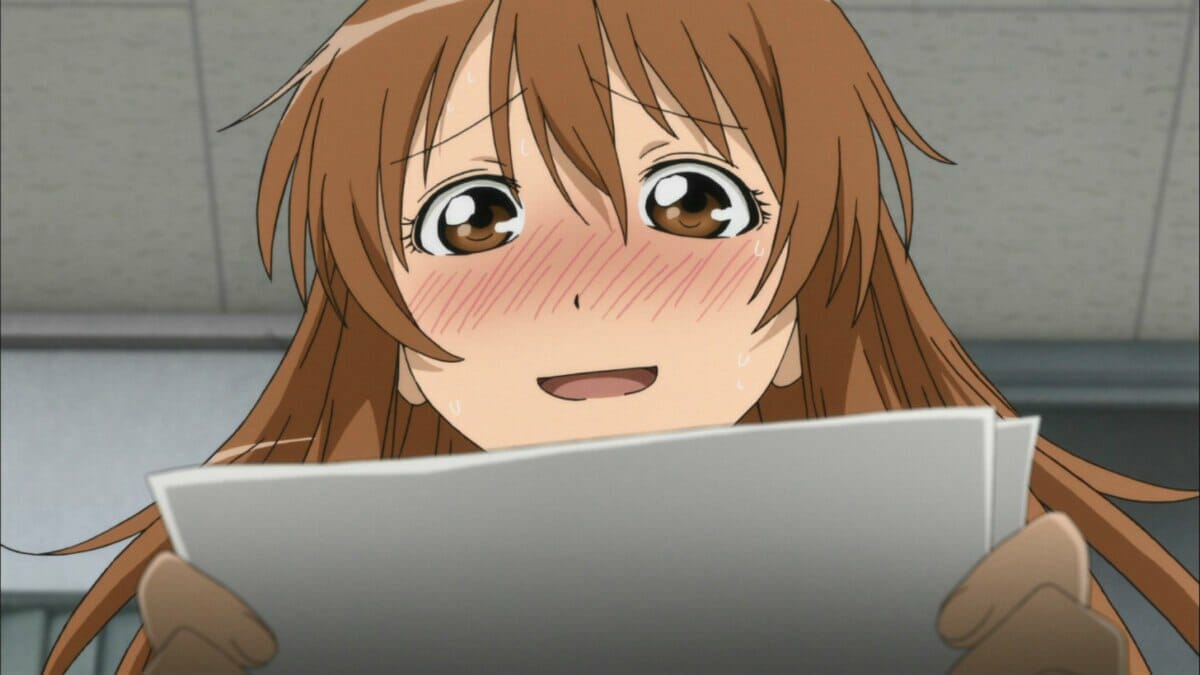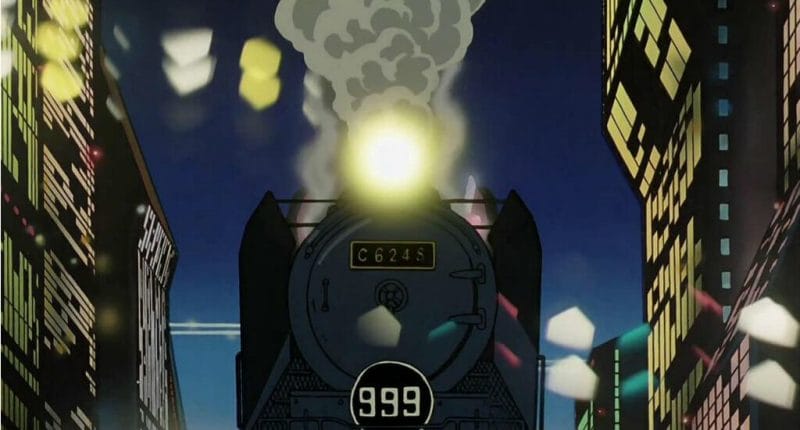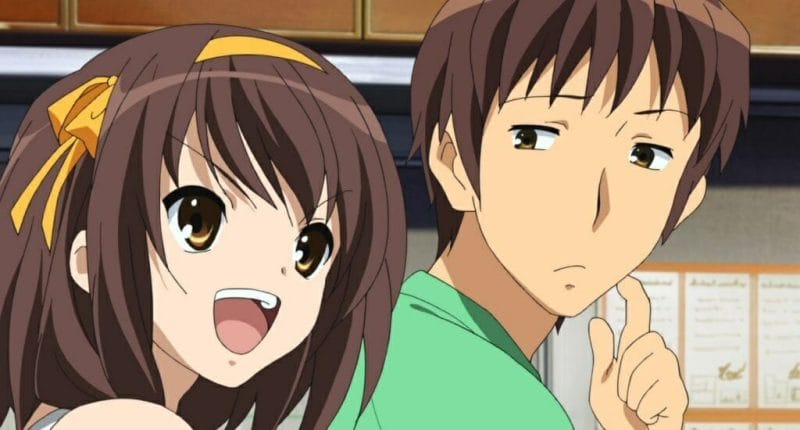I can say, without a doubt, that anime has had a huge influence on my life. I first discovered the medium way back in high school, and quickly got involved with the Anime Music Video scene. In fact, that’s the largest reason that I’m a visual effects artist. Today, I work on major motion pictures and television series.
Nowadays, I’m the office’s nerd girl, with crossdressing anime figurines on my work desk (A counter to a few of my co-workers’ desks, which are covered in ‘boobie figurines’. They compliment me on also having cute girls on my desk, and I have a surprise for them.) and a “Fujoshi” t-shirt that often wear on Fridays. Back in high school, though, I was more of a very boring boy. Yes, I’m a transsexual fujoshi anime nerd, and I’m going to tell you the tale of anime’s influences on my views of sexuality and gender.
Of late, there’s been a pushback against queer folks in anime fandom, mostly by people who seem to believe that all these “gays in the anime” are some kind of recent “invasion.” Meanwhile, I look over my Sailor Moon R: The Movie VHS and think “Ohhhhh, really?”
Long before even I got into anime (I’ve been in the fandom a long time), many people were attracted to the genre purely because it was “strange, and interesting, and like nothing I have ever seen before.” Anime and its fandom has been attracting people from all walks of life, including good numbers of queer people, ever since it was first imported across the Pacific. This, however, is just the story of me getting in with the “nerd group” in high school and beyond.
Every group of nerds has its sub-groups: the D&D players, the video game fans, the comic fans, and so on. I got into this group as I was getting into anime, and my reasons were the same as any others: because anime was like nothing I’d seen before. On TV, I saw Sailor Moon, Gundam Wing, Ninja Scroll, Patlabor I & II, Dominion Tank Police, and whatever else was being broadcast in Canada in the very late 1990s.
In my circle, we also had the “Yaoi Fangirls.” “Fujoshi” wasn’t a word that had entered the western fandom’s vernacular at the time. The girls in this group were trading slash fanfics and one girl, who is one of my friends to this day, had Japanese Boys’ Love manga. Not scans but physical raw books that she was somehow buying online, as a minor, without a credit card, in the Canadian Maritimes, because she was some kind of wizard. It was here, when I realized that anime wasn’t just “new and interesting,” and that it basically broke everything that I thought were the “rules.” These girls, who I was now part of a social circle with, were tittering over tales of homosexual love in content that featured boys ranging from the masculine to so feminine that they might as well be “princesses.”

One Sailor Moon fanfic shared with me was literally about Tuxedo Mask impregnating Zoisite with a rogue rose that strikes him in the stomach. MPREG (“Male Pregnancy”) really isn’t my thing, but I wanted to illustrate just the kind of people I was hanging out with in high school. Tippy-toeing into this “yaoi scene” was significant to me.
Bonus trivia; At this time we could only read the word ‘yaoi’ online and, as a result, we pronounced it wrong. Think “ya-oi,” like you would pronounce ‘joy’. Just one of those things from the days when the Anime Web Turnpike was still a central hub for fandom content.
I still remember when I started watching Sailor Moon S as it was broadcast on YTV. It was the third episode of the season, and I was watching it in the basement rec room. I still fondly remember sitting on the floor, comforter around me, with a “borrowed” box of Girl Guide cookies in front of me. The entire cast is obsessing over this new blond boy who is introduced. He’s amazing: he drives a car, a motorcycle, and he even has a mature looking girlfriend. By the end, it’s revealed that this is no boy, “Sorry to burst your bubble that I’m a girl,” she says. Meanwhile, as the credits rolled, my thoughts were “‘That guy was a girl, and she’s STILL the hottest guy in this show!” Lita/Makoto agrees with me; she was still crushing on Amara/Haruka in the seventh episode of Sailor Moon S. Also, let’s be honest, Darien/Mamoru is stiff and boring, fight me!
Since then, this has become something that I’ve long adored about anime, and it’s had a massive influence on my own views of sexuality and gender. Anime is so incredibly queer and many shows, particularly Sailor Moon, had a dramatic impact on LGBT viewers. Girls who want to be princes who save princesses, crossdressers, boys who look like girls, girls who look like boys, boys in love with boys, girls in love with girls, straight up transgender characters, and everything else.
This is what I’ve been immersed in, ever since I entered the fandom. I cheered for Utena as she declared her intention to be ‘A prince who saves princesses’ in Revolutionary Girl Utena. I watched Shuichi and Yuki, two men, fall in love in Gravitation. I related to the ever-feminine Rukia in Steins;Gate. I felt disappointment as I watched Shouta, the boy who is a magical girl, die in Magical Girl Raising Project. In these and so many other anime, I’ve seen countless examples of queer content in anime, and loved every scene and panel that I’ve come across.
Many in the LGBT community can be quick to judge anime for its problematic representations of LGBT people. I won’t argue that this is incorrect, but I would argue that representation is there, and it is in there in volume. So many series feature something at least a little bit queer within them, and often present it as “No Big Deal,” which is a big contrast to many other forms of entertainment. The accessibility of queerness in anime is something that I hold very dearly.
I look out at the world now, with so many hours of anime and its oddball characters and scenarios under my belt, and find that anything remotely ‘queer’ in the world seems entirely natural and unremarkable to me. To put it more crassly: if it turned out that half of women had penises, I’d just quietly say “Anime knew the truth all this time!” to myself.
Between now and then, I did transition from male to female but this was never going to be the story of that decision or its sequence of events. Between then and now, though, there was a lot of anime and manga, rife with queer themes and characters, with me. The whole ‘trans thing’ feels like ‘No big deal’ as a result’. To the rest of the world, I’m just that anime fangirl who poses her Sword Art Online and Gun Gale Online Kirito figmas on her desk to be kissing each other, and works far to many overtime hours.
I’m still best friends with one of the girls from high school to this day, though our tastes have diverged since. She’s come to prefer horror and darker themes, while I go after cheesy, schlocky romance. At this year’s Anime North, we came across a pile of used yaoi and Boys’ Love manga published in the 2000s. We debated not about whether or not it was “trash,” but whether it was “terrible trash” or the “greatest trash ever.” She humored me, as we dug for all the volumes of Mikiyo Tsuda’s The Day Of Revolution, a manga about an intersex boy who transitions to female upon the discovery of his condition.












